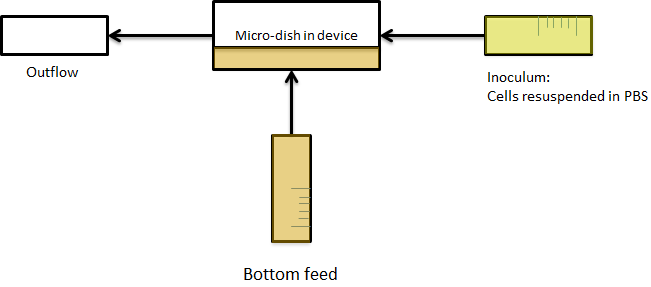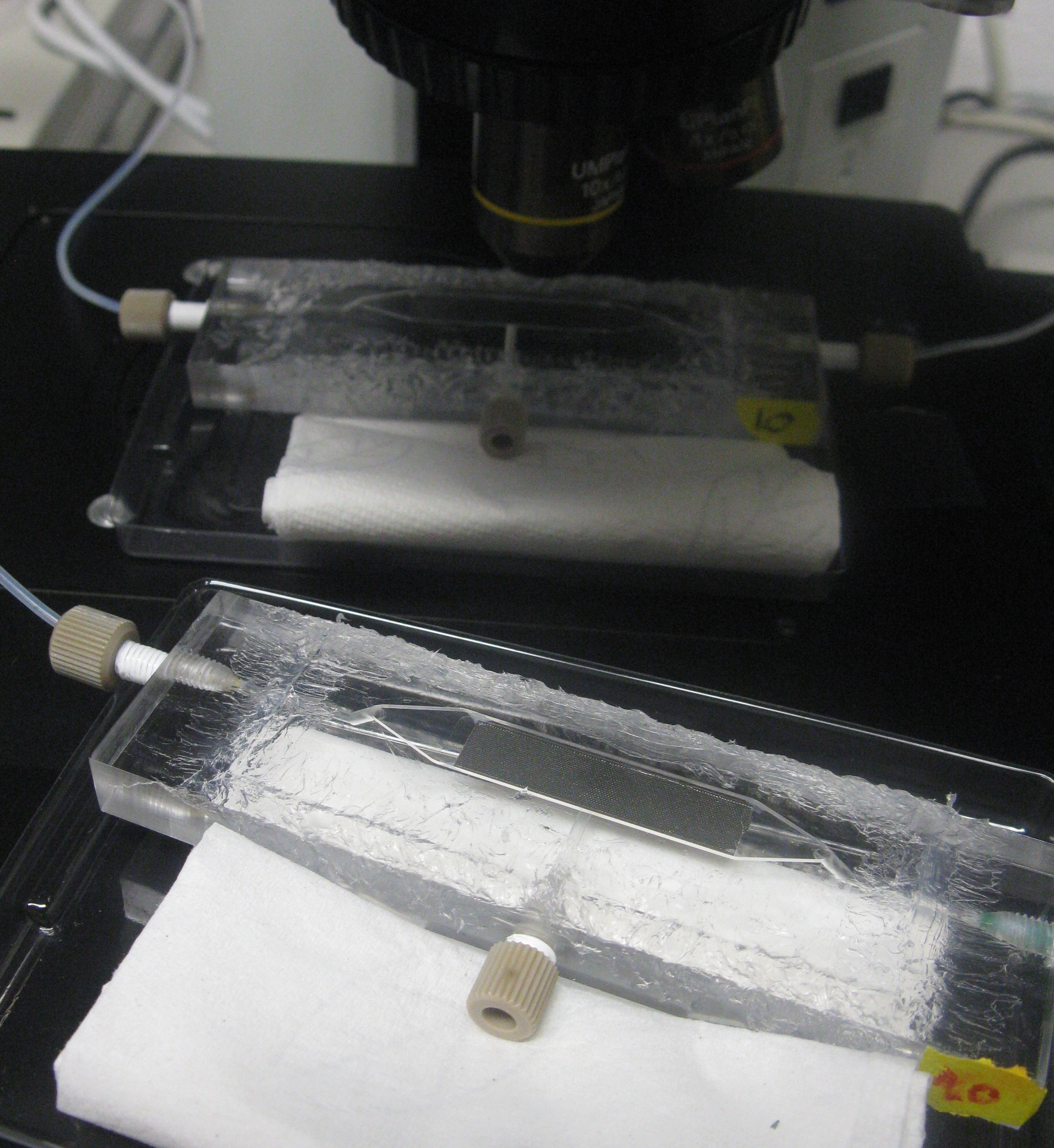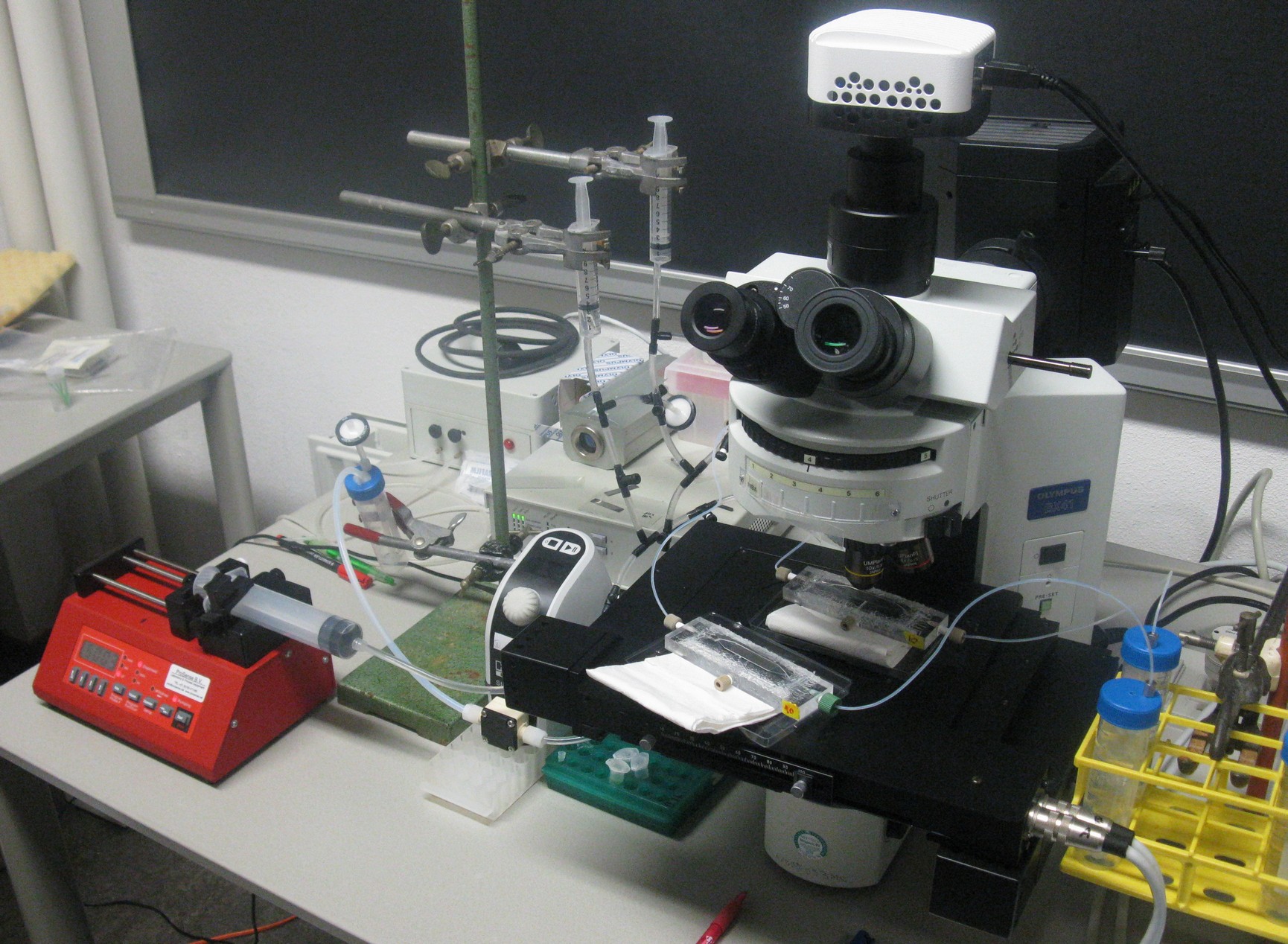Team:Wageningen UR/Project/DevicesSetup
From 2011.igem.org
(→Custom fluidic device designed by Team Wageningen UR to measure oscillations) |
(→Custom fluidic device designed by Team Wageningen UR to measure oscillations) |
||
| Line 24: | Line 24: | ||
=== Setup === | === Setup === | ||
| - | + | ||
In order to physically constrain the bacteria, Hasty used a trapping chamber as depicted in Figure Xsome below. The chamber had the dimensions of 1X1 micron. This limited the cell growth to forming a monolayer (sentence). Excess cells and AHL were flushed away through the main chanel. [REF] | In order to physically constrain the bacteria, Hasty used a trapping chamber as depicted in Figure Xsome below. The chamber had the dimensions of 1X1 micron. This limited the cell growth to forming a monolayer (sentence). Excess cells and AHL were flushed away through the main chanel. [REF] | ||
| Line 36: | Line 36: | ||
[[File:Micro-sieve_device_WUR.png|300px|center]] | [[File:Micro-sieve_device_WUR.png|300px|center]] | ||
| - | The setup as shown above imposes the problem that the diffusion of AHL is much slower than the flow rate over the sieve. Therefore the AHL will always be flushed away before a uniform concentration can be established over the whole cell culture, thus preventing any synchronized behaviour to arise. The use of a micro-sieve in the course of our iGEM project was therefore discarded. | + | The setup as shown above imposes the problem that the diffusion of AHL is much slower than the flow rate over the sieve. Therefore the AHL produced will always be flushed away before a uniform concentration can be established over the whole cell culture, thus preventing any synchronized behaviour to arise. The use of a micro-sieve in the course of our iGEM project was therefore discarded. |
| + | The problem described above does not arise when using the micro-dish. In the 40 micron deep wells the cells can be trapped and AHL will have a better chance to establish a uniform concentration througout the well. This will create a higher chance of synchronized oscillatory behaviour of the cells growing in a well. Special care has to be taken with the velocities of the fluid flowing over the wells. If the flow rate is to high, the cells will be spilled out of the wells. This behaviour was also observed under the microscope. | ||
| - | |||
| - | - | + | [[File:Micro-dish1_device_WUR.png|350px|center]] [[File:Flushingoutofwells_WUR.gif|280px]] |
| - | |||
| - | |||
[[File:Micro-dish2_device_WUR.png|300px|center]] | [[File:Micro-dish2_device_WUR.png|300px|center]] | ||
| Line 61: | Line 59: | ||
[[Team:Wageningen_UR/Project/ModelingProj1#Modeling_synchronized_oscillations| back to top]] | [[Team:Wageningen_UR/Project/ModelingProj1#Modeling_synchronized_oscillations| back to top]] | ||
| - | + | ||
Another concern for the setup of the device was to be able to gain control over the flow rate. According to Bernoulli's principle, the velocity of a fluid can be influenced by varying the height of the medium bottle. This approach was also used in the paper cited above. Figure X. shows the corresponding setup and the applying equations. | Another concern for the setup of the device was to be able to gain control over the flow rate. According to Bernoulli's principle, the velocity of a fluid can be influenced by varying the height of the medium bottle. This approach was also used in the paper cited above. Figure X. shows the corresponding setup and the applying equations. | ||
| - | [[File:Scheme_setup1_WUR.png| | + | [[File:Scheme_setup1_WUR.png|400px|left]][[File:Setup1_WUR.JPG|250px]] |
| Line 82: | Line 80: | ||
| - | [[File:Closeup_device_WUR.JPG| | + | [[File:Closeup_device_WUR.JPG|500px]][[File:Setup_WUR.jpg|500px]] |
Revision as of 18:06, 19 September 2011
 "
"














